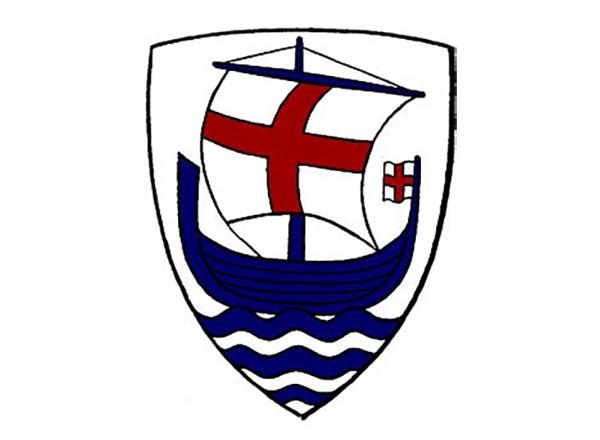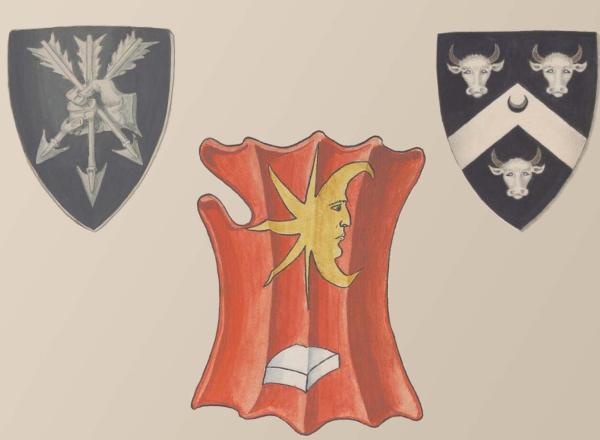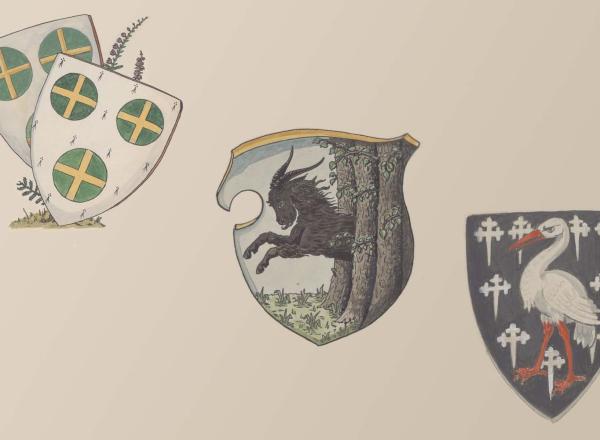Committee on Heraldry hero




The Committee on Heraldry at American Ancestors is the oldest non-governmental heraldic body in the world. The Committee was established in 1864 to “collect and preserve information in regard to heraldry.” The Committee’s heraldic interests are national in scope, embracing the use of heraldry and coats of arms throughout the current United States and all its colonial predecessors. Watch an Introduction to the Committee on Heraldry at American Ancestors.

Join Now
Established in 1864 within American Ancestors (formerly the New England Historic Genealogical Society), the Committee on Heraldry is the oldest non-governmental heraldic body in the world. It was established to “collect and preserve information in regard to heraldry,” and its members consist of heraldic and genealogical specialists and scholars appointed by the Society. The Committee’s interests are national in scope, embracing the use and understanding of heraldry throughout the current United States and all its colonial predecessors. Activities include promoting and publishing heraldic scholarship, providing education in heraldry and genealogy, and collecting and preserving materials in the field of heraldry.
Among the Committee on Heraldry’s most significant ongoing publications has been the Roll of Arms, a register of coats of arms of settlers in the colonies now comprising the United States, or immigrants to the United States, whose arms are more than one hundred years old, and were borne by proved hereditary right or lawful grant in the settler’s country of origin. Compilation of the Roll of Arms began in 1914, though it was based on earlier work of Committee members first published in the 1890s. The Committee welcomes the submission of new entries for the Roll. It also records arms newly assumed within the United States and arms honorarily granted to Americans by the heraldic authorities of foreign governments.
The Committee on Heraldry (CoH) actively supports programs in heraldic education, sponsors symposia and online programming, assists in collecting and conserving original manuscripts, seeks donations of heraldic publications, and in conjunction with other American Ancestors activities, engages with constituents throughout the United States and abroad who wish to learn more about heraldry in their family histories.
Your support as an Associate will aid future publications, scholarship, and programming of the Committee on Heraldry.
In 2022, the Associate category was introduced for those with an affinity for heraldic studies and those who wish to support the important work of the Committee on Heraldry and American Ancestors.
Committee on Heraldry Associate dues are $250 annually.
Download the recent Report of the Committee for 2024.
99-101 Newbury Street
Boston, MA 02116
telephone: 888.296.3447
email: heraldry@americanancestors.org
Members of the Committee:
Ryan J. Woods, Chair
Nathaniel Lane Taylor, Registrar
Joseph McMillan, Corresponding Secretary
Bertram Lippincott III, Corporate Secretary
Julian V. Brandt
Brady Brim-DeForest
Christopher C. Child
John Blythe Dobson
Peter O'Donoghue, York Herald, College of Arms
John Shannon
D. Brenton Simons
Matthew Alderman, Artist to the Committee
Ex Officio:
David M. Trebing, Chair, Board of Trustees
The Committee on Heraldry at American Ancestors is the oldest non-governmental heraldic body in the world. The Committee was established on 3 February 1864, within American Ancestors (formerly the New England Historic Genealogical Society), to “collect and preserve information in regard to heraldry.” Although based in New England, the Committee’s heraldic interests have always been national in scope, embracing the use of heraldry and coats of arms throughout the current United States and all its colonial predecessors.
Among the committee’s activities and publications over many years, the most significant has been the Roll of Arms, a register of coats of arms of settlers in the colonies now comprising the United States, or immigrants to the United States, whose arms are more than one hundred years old, and were borne by proved hereditary right or lawful grant in the settler’s country of origin. Compilation of the Roll of Arms began in 1914, though it was based on earlier work of Committee members first published in the 1890s. The Committee still welcomes the submission of new entries for the Roll.
The Committee also records arms newly assumed within the United States, or arms honorarily granted to Americans by the heraldic authorities of foreign governments. Lists of such modern or assumed arms recorded by the Committee have not been published but may be placed on this website in the future.
The Committee and its members have long been involved in a variety of heraldic endeavors beyond the Roll of Arms, including publication of scholarly works, consultation, and educational activities within and outside American Ancestors. Publications of the Committee and its members range from the Heraldic Journal, launched in Boston in 1865 by members of the Committee (short-lived but still useful), down to the publication of The Balliol Roll in 2002, the earliest surviving manuscript collection of Scottish coats of arms.
The Committee on Heraldry compiles arms of American colonists, or immigrants to the United States, who were rightfully armigerous according to the authorities and customs of their countries of origin.

Since 1914 the Committee on Heraldry has compiled a Roll of Arms of American colonists, or immigrants to the United States, who were rightfully armigerous according to the authorities and customs of their countries of origin. The precise scope of the Roll of Arms has changed more than once in subsequent years. Since 1972, only arms borne prior to 1900 are eligible for the Roll of Arms.
The Roll has been published periodically since 1928, in pamphlet form and in the New England Historical and Genealogical Register. The parts of the Roll of Arms published in the Register are available to American Ancestors members on AmericanAncestors.org
In 2013 the Committee published a one-volume edition of the complete Roll of Arms to date, through Part 10 (registration nos. 1–741), edited and with a historical introduction and notes by the Committee’s former secretary, Henry L. P. Beckwith. This volume is available from the American Ancestors Bookstore.
The newest published part of the roll of arms, the Eleventh Part, is being published in 2022 in the Register.
A searchable index to the Roll of Arms includes all approved registrations to the Roll including the subject’s name, year of immigration, nationality, colony or state of residence in America, and entry number in the Roll of Arms. Nationality and year of immigration, ordinarily not published in the early parts of the Roll, have been supplied here to better identify the subjects.
Access Index to the Roll of Arms
This index provides each subject’s name, year of immigration, nationality, colony or state of residence in America, and entry number in the Roll of Arms. Nationality and year of immigration, ordinarily not published in the early parts of the Roll, have been supplied here to better identify the subjects.
Key to immigration date codes: a — arrived in or after that year; b — arrived in or before that year; c — circa or century; d — year of settler’s death; g — grant of arms in that year to a colonist already settled here; mg — modern (20th-century) conferral of arms by a foreign governmental authority to an American (not recorded in the Roll after 1972).
Numbering: With the appearance of the Roll of Arms: Eleventh Part in 2022, The Roll is now published through number 812. Index entries from 813 forward are provisional, pending publication.
Index entries marked with an asterisk (*) have been cancelled since original publication.
Detailed lists of entries added to the Roll of Arms since 2020, not yet formally published in the Roll, are included in the Committee's annual reports for each year. See Publications below to download all annual reports.
The Committee on Heraldry reviews applications to enroll arms in two primary categories: Registering historical arms of American colonists, or immigrants to the United States, who were rightfully armigerous according to the authorities and customs of their countries of origin. The arms must date from before the year 1900; and Recording modern coats of arms borne by Americans, including arms that have been conferred by foreign governmental heraldic authorities, as well as arms that are privately designed and adopted—known as assumed arms.

The Roll of Arms may include the coat of arms of any settler in the Thirteen Colonies, or any settler in any locale that is now part of the United States, or any immigrant to the United States, that was rightfully borne according to the authorities (if any) or customs of his or her mother country. The arms must date from before the year 1900, though the settler or immigrant may have arrived in the United States at any time before or since. Those wishing register a coat in the Roll of Arms should use the form available here: Application for registration in the Roll of Arms (PDF)
The person submitting an application need not be related to the subject of the application; no proof of descent from the subject is necessary. Applications must prove the subject’s right to the arms. This ordinarily involves both proving a genealogical connection between the subject and his (or her) claimed family of origin in Europe, and proving that family’s right to the arms by long-accepted use or by specific grant or sanction.
In addition to the Roll of Arms, the Committee records modern coats of arms borne by Americans, including arms that have been conferred by foreign governmental heraldic authorities, as well as arms that are privately designed and adopted—known as assumed arms. The United States has no statutory regulation of heraldry, and no governmental authority charged with their oversight, so there is, strictly, no distinction between privately designed arms and those adopted by honorary grant from a foreign heraldic authority.
Assumed arms have been recorded by the Committee since 1933, and modern arms adopted through honorary grant by foreign heraldic authorities, though registered in the Roll of Arms from 1923 to 1972, have been recorded separately since that time.
Those wishing to apply for the recording of modern arms should use the appropriate form:
Application for recording Arms assumed by an individual (PDF)
Application for recording Arms assumed by a corporate or civic entity (PDF)
Application for recording Arms recently granted or confirmed by a foreign governmental authority (PDF)
Applications for recording arms granted or confirmed by a foreign heraldic authority should include copies of relevant foreign documents, and, if applicable, a copy of any pedigree prepared or approved by the foreign authority (for example, a pedigree linking a modern American applicant for a British grant of arms to an ancestor who was an English or Scottish subject). Applications for recording historically assumed arms (before the late nineteenth or twentieth century) should document as carefully as possible the appearance of the arms on dated documents or artifacts, or their description in dated textual sources. Statements in a late 19th-century or early 20th-century reference or genealogy that a certain colonist’s family bore a particular coat of arms cannot be credited without corroborative evidence of actual use of the arms.
Approval of modern arms for record, especially self-designed arms, is subject to the Committee’s discretion. The applicant must warrant that newly assumed arms are, so far as is possible to ascertain, original (not in use to represent another individual or family). Given that the United States has never had laws regulating the creation and use of coats of arms, and that Americans represent many different heraldic traditions in our diverse ancestries, the Committee does not require that the newly created arms it records adhere strictly to any particular traditional conventions governing design. The Committee does, however, seek to apply a minimal heraldic standard, and not all arms submitted for record are approved.
The Committee will only record a shield and crest, not other heraldic elements (supporters, caps and helms, medallions) traditionally associated with ranks or honors in some countries. Completed forms, with accompanying documentation if relevant, should be mailed or emailed to the Committee for review. Please include an email address if applying by mail. If the arms are accepted for record by the Committee, the applicant will be notified, and a $50 fee is to be paid by check or online payment to American Ancestors. The applicant will then receive a formal letter certifying record or registration of the arms. The Committee also welcomes inquiries from those uncertain of the appropriate category under which to apply, or with any other questions.
The Committee expects to develop a plan for publication of an index of modern arms on record in the future.
Report of the Committee for 1864
Report of the Committee for 1899
Report of the Committee for 1914
Report of the Committee for 2020
Report of the Committee for 2021
Report of the Committee for 2022
Report of the Committee for 2023
Report of the Committee for 2024
Published by the founding members of the Committee on Heraldry as a quarterly journal, in four volumes, 1865-1868.
Heraldic Journal, vols. 1-2 (1865-66): Yale University Library copy, at Hathi Trust.
Heraldic Journal, vols. 3-4 (1867-68): Yale University Library copy, at Hathi Trust.
A Roll of Arms Registered by the Committee on Heraldry of the New England Historic Genealogical Society: Parts 1–10, edited by Henry L. P. Beckwith (2013, reprinted, with additions, 2014).
A Roll of Arms Registered by the Committee on Heraldry of the New England Historic Genealogical Society: Eleventh Part, edited by Nathaniel Lane Taylor (2024).
The Gore Roll of Arms. (Online database: AmericanAncestors.org, 2003), (Unpublished. John Gore. "The Gore Roll of Arms," 17__?.)
Roll of Arms Registered by American Ancestors, 1915-1945. (Online database: AmericanAncestors.org, 2020).
The original signed and color-emblazoned certificates corresponding to our Roll of Arms, First through Fifth Parts (nos. 1 to 378), executed from 1915 to 1945.